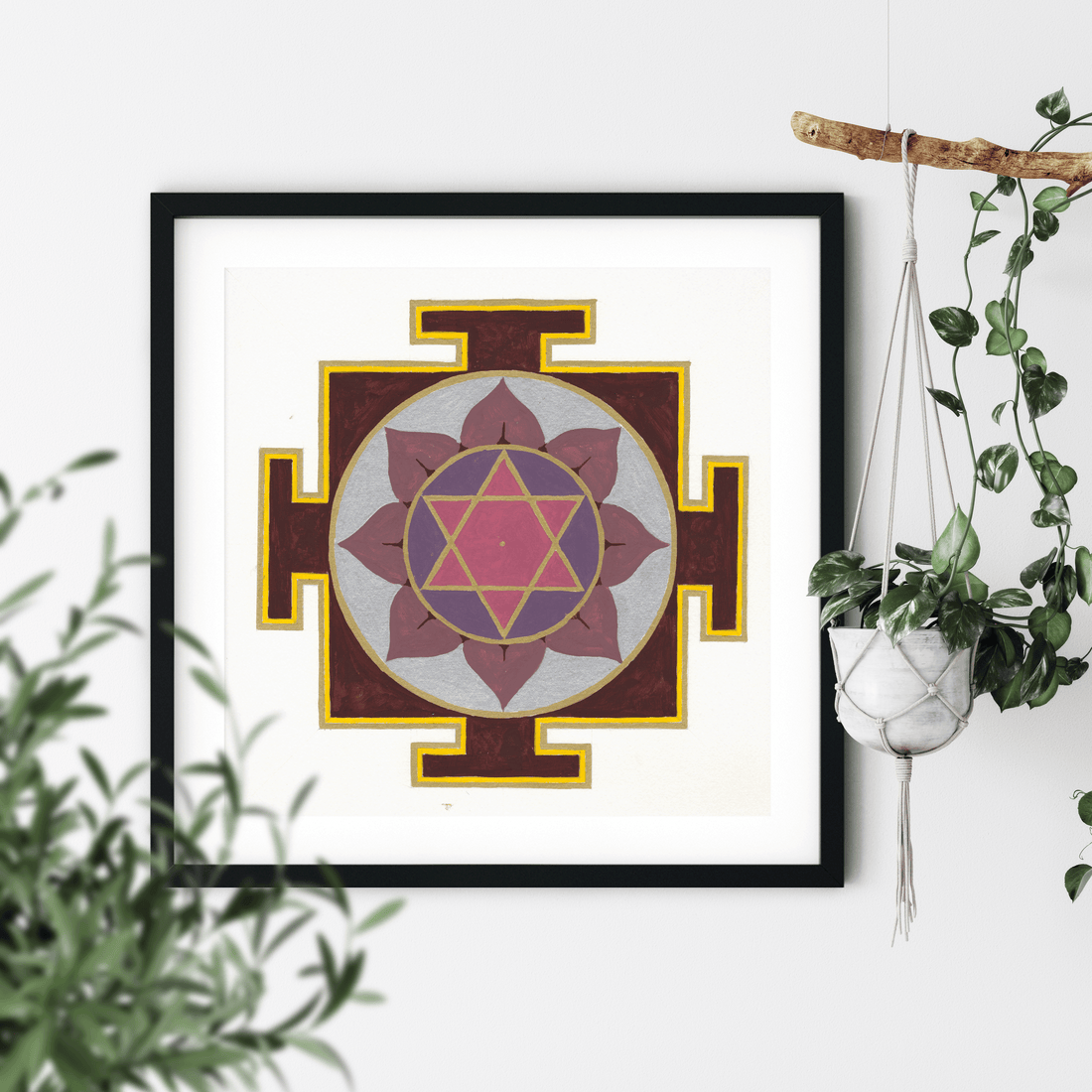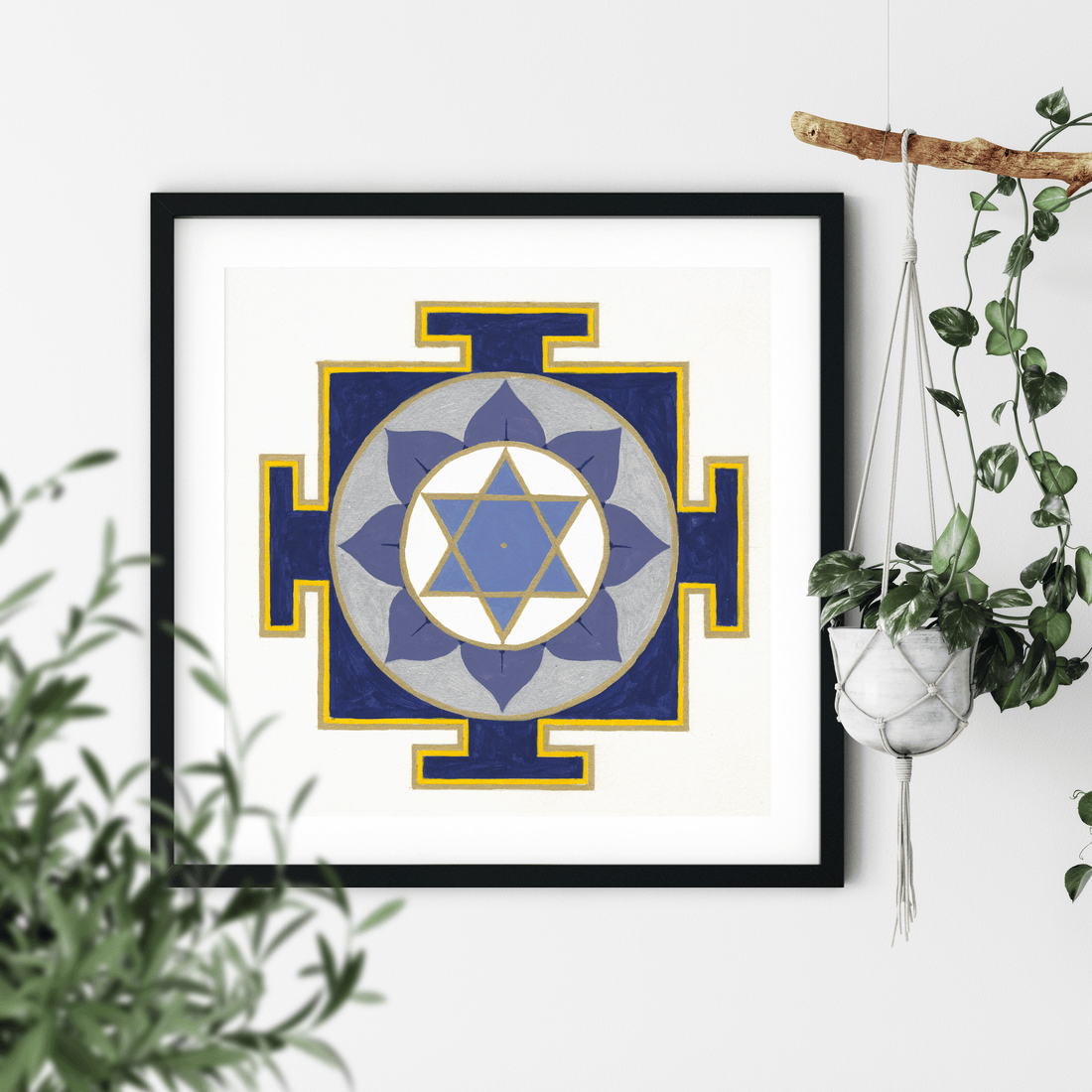Welcome to the wonderful world of mantra meditation, also known as Japa meditation. Japa is a form of meditation that involves the repetition of a sacred word, phrase or sound (with the assistance of a mala) to focus the mind, cultivate inner peace and achieve a desired state of consciousness. You can literally transform every area of your life by simply committing to reciting a mantra aligned with your desired outcome for just 5 minutes a day, obviously the more the merrier 🤓
Mantras are sacred sounds, words, or phrases repeated during meditation to focus the mind and connect with a higher state of consciousness. Derived from Sanskrit, the word "mantra" means "instrument of thought." Mantras can be chanted aloud, whispered, or silently repeated in the mind. Each mantra carries a specific vibration and intention, influencing the mind and body in profound ways.
You can complete your mantra discipline without the aid of a mala however I personally recommend and use a mala in my meditation practice as it helps focus my attention and has the added benefit of storing the spiritual energy i cultivate during my practice.
Your Mala is a sacred instrument and is to be treated as such, you may like to keep it in a special place or on your altar if you have one. i personally keep mine by my bedside that way no one else touches it 😉
Undertaking a 40-day mantra discipline can be a transformative journey, offering profound benefits for your mind, body, and spirit. This practice involves committing to chanting or reciting a specific mantra daily for 40 consecutive days. By integrating this discipline into your life, you can harness the power of intention, focus, and repetition to achieve deep inner transformation and alignment with your higher self. Central to this journey is the concept of sankalpa, a heartfelt intention or resolve that guides your practice. Here’s how to embark on a 40-day mantra discipline and choose your sankalpa.
1. Creating a Sacred Space
Designate a quiet, comfortable space for your practice. This can be a corner of a room or a special area where you can sit undisturbed. Enhance this space with elements that inspire tranquility, such as candles, incense, crystals, or images of deities and spiritual symbols that are meaningful to you.
2. Setting a Consistent Practice Time
Choose a specific time each day for your mantra practice, whether in the morning to start your day with intention or in the evening to wind down and reflect. Consistency is key to establishing a meaningful practice.
3. Using a Mala for Repetition
A mala, or prayer beads, can help you keep track of your mantra repetitions. A traditional mala has 108 beads, representing a complete cycle. Chanting your mantra 108 times daily helps you stay focused and connected to the practice.
If you’d like to learn how to make your own Mala please check out my course “The Art of Making Malas" or alternatively you can purchase a Crystal Mala from my online store.
4. Choosing Your Sankalpa (Intention)
A sankalpa is a heartfelt intention or resolve that guides your practice. It’s more than a goal; it’s a deep-seated commitment to align with your true purpose and highest aspirations. Here’s how to choose your sankalpa:
-
Reflect on Your Intentions
Take time to reflect on what you truly wish to cultivate or transform in your life. Consider areas where you seek growth, healing, or alignment. Your sankalpa should resonate deeply with your inner truth and long-term vision.
-
Keep It Positive and Present
Phrase your sankalpa in a positive and present tense, as if it’s already manifesting. This creates a powerful affirmation that aligns your subconscious mind with your desired reality.
-
Make It Specific and Realistic
While your sankalpa should be aspirational, it should also be specific and realistic. This ensures that it’s achievable and provides a clear focus for your practice.
-
Feel the Emotion
Connect emotionally with your sankalpa. Feel the joy, peace, or fulfillment it brings as if it’s already part of your reality. This emotional connection amplifies the power of your intention.
5. Choosing Your Mantra
Select a mantra that resonates with your sankalpa (intentions) and spiritual goals. Below are several examples of sankalpas, each accompanied by an appropriate mantra to support and amplify the intention.
Sankalpa for Inner Peace and Calm
Sankalpa: "I am at peace with myself and the world around me."
Associated Mantra: Om Shanti Shanti Shanti
Meaning: This mantra invokes peace threefold – within oneself, in the environment, and in the universe.
Sankalpa for Health and Vitality
Sankalpa: "I am healthy, vibrant, and full of energy."
Associated Mantra: Om Ram Ramaya Namaha
Meaning: This mantra is associated with Rama, a deity known for his strength and vitality, promoting physical health and well-being.
Sankalpa for Compassion and Kindness
Sankalpa: "I am compassionate and kind to myself and others."
Associated Mantra: Om Mani Padme Hum
Meaning: This Tibetan mantra invokes the qualities of compassion and wisdom, often associated with the Bodhisattva of Compassion, Avalokiteshvara.
Sankalpa for Abundance and Prosperity
Sankalpa: "I am abundant and attract prosperity in all areas of my life."
Associated Mantra: Om Shreem Mahalakshmiyei Namaha
Meaning: This mantra is dedicated to Goddess Lakshmi, the deity of wealth and prosperity, invoking abundance and success.
Sankalpa for Emotional Balance
Sankalpa: "I am emotionally balanced and grounded."
Associated Mantra: Om Hrim Shrim Namah Shivaya
Meaning: This mantra invokes Shiva, the deity of transformation, helping to balance emotions and promote inner stability.
Sankalpa for Spiritual Growth
Sankalpa: "I am evolving spiritually, connected to my higher self."
Associated Mantra: Om Namah Shivaya
Meaning: This powerful mantra is dedicated to Shiva, promoting spiritual growth and self-realization.
Sankalpa for Self-Confidence
Sankalpa: "I am confident and trust in my abilities."
Associated Mantra: Om Dum Durgayei Namaha
Meaning: This mantra invokes Goddess Durga, the embodiment of strength and protection, enhancing self-confidence and courage.
Sankalpa for Love and Relationships
Sankalpa: "I am surrounded by love and attract positive relationships."
Associated Mantra: Om Kamadevaya Vidmahe Pushpavanaya Dhimahi Tanno Anangah Prachodayat
Meaning: This mantra invokes Kamadeva, the god of love, promoting harmony and positive relationships.
Sankalpa for Clarity and Focus
Sankalpa: "I am clear-minded and focused on my goals."
Associated Mantra: Om Aim Saraswatyai Namaha
Meaning: This mantra invokes Goddess Saraswati, the deity of wisdom and knowledge, enhancing clarity and focus.
Sankalpa for Gratitude and Contentment
Sankalpa: "I am grateful for all that I have and content in the present moment."
Associated Mantra: Om Namo Bhagavate Vasudevaya
Meaning: This mantra honors Lord Vishnu, promoting gratitude and contentment in life.
6. The Practice of Chanting
With your mantra and sankalpa in place, you’re ready to embark on your 40-day mantra discipline. Each day, at your designated time, sit comfortably with a straight spine in your sacred space. Gently close your eyes and take a few deep breaths to centre yourself.
Begin your practice by silently or verbally stating your sankalpa three times. Feel the truth and power of your intention in the present moment.
Commence reciting your chosen mantra, focusing on the sound and vibration. You can use a mala to keep track of repetitions, typically completing 1 mala (108 cycles) or for as many malas as you’ve dedicated yourself to completing each day (ie. 2 malas equals 216 repetitions). Allow the sound vibrations and your heartfelt intention to guide you deeper into meditation and self-awareness.
After chanting, sit in silence, reflecting on your sankalpa and feeling its presence in your life. Allow the mantra’s energy to permeate your being.
7. Integrating Mantra into Daily Life
Beyond dedicated practice sessions, integrate your mantra into daily activities. Repeat it silently while walking, during mundane tasks, or in moments of stress. This helps maintain a continuous connection to the calming and centering effects of the mantra, fostering a state of mindfulness and inner peace throughout the day.
8. Embracing the Journey
Mantra discipline is a journey of self-discovery and spiritual growth. By committing to regular practice, you create a sacred space within yourself for healing, transformation, and inner peace. Remember, the true power of a mantra lies in your intention and dedication. Embrace this ancient practice as a tool for connecting with your higher self and navigating life with clarity and serenity.
Have you started your mantra practice? What benefits have you experienced? Share your thoughts and experiences in the comments below, and let’s inspire each other on this transformative journey.
Namaste xo






